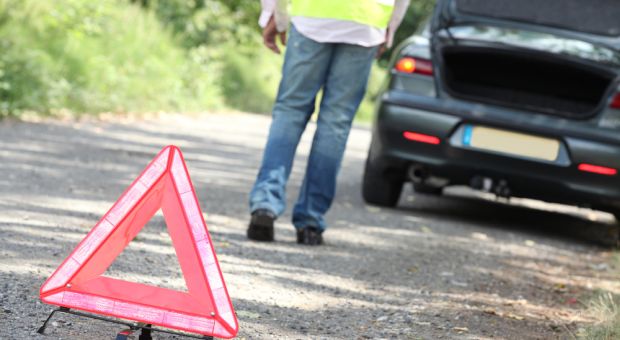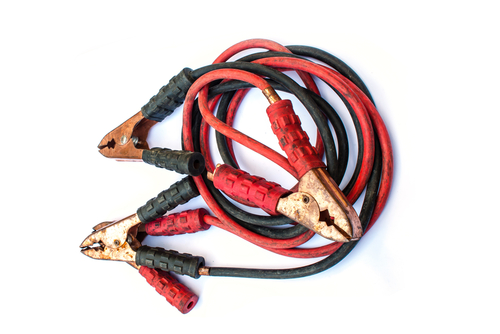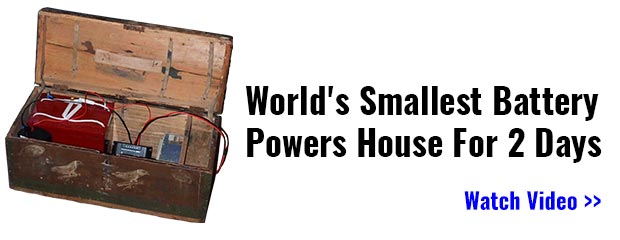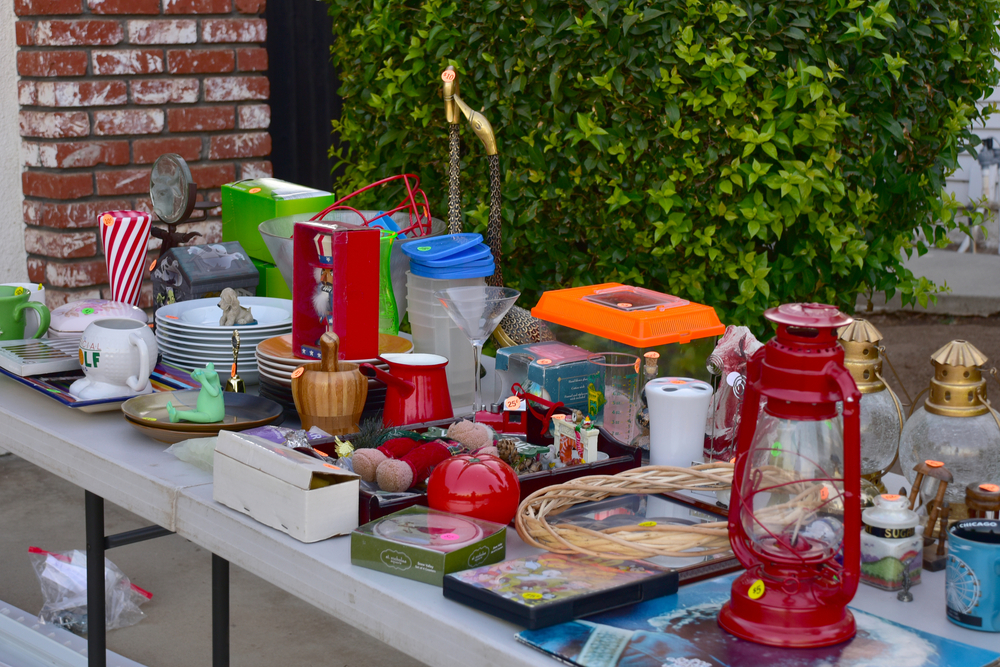I’ve owned and driven cars for over 40 years now, even since I was old enough to get a driver’s license.
I’ve traveled hundreds of thousands of miles over the roads; driven though all kinds of weather and survived just about any kind of problem you can imagine. I’ve been stuck in floods, blizzards and sand. I’ve spent more than one night trapped in my car and had more than one die on me; some of nothing more than old-age and exhaustion, others from engines blowing or the wiring catch fire.
Portable Device Generator – Learn How To Build Your Own Energy Generator!
By and large, I’ve driven older vehicles, as I could never see sticking myself with the huge payments associated with most cars. But just because they were older cars, doesn’t mean that they weren’t good cars. I’ve always tried to keep my cars in good mechanical shape and made sure they were ready to get me through those everyday problems.
But being ready to get through these problems entailed much more than just having a sound engine; it meant having the right things in the car to deal with a wide variety of different situations. We are a highly mobile society today, taking our cars everywhere. So preparing your car to deal with a range of potential problems also means that you’re ready to deal with those problems as well.
This has been how I’ve operated for over four decades now. In doing so, I’ve not only been prepared to help myself through a wide range of problems, but have also been able to help many others who have found themselves in trouble. Whether it was in being the first to arrive at the scene of an accident or finding someone whose car ran off the road in an ice storm, I’ve helped enough people out of trouble, that I’ve often wondered why I didn’t get preprinted invoices to use.
The Vehicle Itself
I always start with the vehicle itself. As I already mentioned, it’s important to have your vehicle mechanically sound. You’re not going to be ready to help yourself out, let alone anyone else, if your vehicle is broken-down beside the road. Granted, there are things which can happen that can’t be foreseen; but if it can be foreseen and you didn’t see it, you’re not helping yourself.
What does this mean in practical terms?
- Change your oil regularly – that does more to maintain your engine’s health than anything
- Check fluids regularly
- Check belts and hoses regularly – there are a lot of breakdowns due to belts and hoses wearing out
- Check tires regularly and fill as necessary – tire air pressure changes with the season, so never assume that it’s okay. Don’t forget the spare either
- All lights are working
- Wiper blades aren’t worn out
- Any red warning lights on the dash have been checked out and necessary repairs made
That’s really not a long list, so it’s not all that hard to keep up with, even on an older vehicle. If you can, you will eliminate a lot of the problems that people end up stuck on the side of the road for; not all of them, but a lot of them.
You may want to make some slight modifications to your vehicle as well, such as adding lights, so that you can see better in an emergency situation. I’ve used a variety of lights at different times; but always make sure that I have at least one powerful spotlight I can use.
Another modification to consider is making sure that you have a good connection point for jumper cables. Some newer cars have the battery hidden. In those cases there are normally contacts you can use, but not all models have them. Make sure you have readily accessible points for jump-starting your car or for jump starting other people’s cars. I’ve even gone as far as running permanent cable to the other end of the car for this purpose.
It’s a good idea to check your vehicle for towing points as well, both in the front and rear. Some cars are not easy to connect to for towing, while others have actual towing points installed. I’m not talking about the towing points used by a tow truck here, but used by a friendly passer-by to get you off the road and out of traffic, or that you would use to do that for someone else.
If your car doesn’t have good towing points, you can easily rectify that problem by attaching some U-bolts to the structure. Just drill holes though and bolt them on. That makes it much faster and easier to hook a tow strap or chain to your vehicle. Of course, if you have a trailer hitch, that can be used as well.
Emergency Vehicle Equipment
The next category of equipment to consider is emergency equipment for your vehicle itself. This is the equipment you need to have, in case of car trouble. Hopefully you’ll never have to use this for your own vehicle, if you are properly maintaining it. But you might end up using these items on other people’s vehicles as well, saving them from a catastrophic problem.
- Basic tool set for repairs – metric socket set, metric wrenches, pliers, screwdrivers
- Jack – I wouldn’t count on the scissors jack that comes with the vehicle, as they are hard to use and not very stable; rather, I carry a hydraulic one
- Lug wrench – again, I don’t count on the one that comes with the vehicle, as it is hard to use, but rather a star wrench
- Water – for an overheated engine
- Hose repair – Duct tape and hose clamps works well for this
- Jumper cables – good quality ones, the cheap ones aren’t good enough
- Towing strap or chain – I prefer a nylon strap, but some people like chains better
- Heavy-duty paper towels – to clean your hands
In addition to these items, it’s a good idea to keep some spare oil, power steering fluid, transmission fluid and brake fluid in your car. A lot of minor emergencies are nothing more than someone forgetting to check their fluids. Along with the battery, those should be the first thing to check.
Personnel Needs
Taking care of your vehicle is merely the starting point. If you take care of it, there’s much that your vehicle can do to take care of you. Today’s cars and trucks are designed with a lot of safety features installed, so that they can protect you in the case of an accident. But they can do more than that; they can act as an emergency shelter, should you need. People live in their cars all the time; and while it may not be a comfortable place to live, it can protect you from the elements in a pinch.
But you’ll want to have some personal equipment and supplies in the car, so that you can be at least somewhat comfortable, in the case of an emergency. If you end up in one of those situations I mentioned in the introduction to this article, you want to have the things you need to have, in order to take care of yourself.
To start with, make sure you have a good EDC bag with you. By “good,” I’m referring to one that is heavy on survival gear. My personal EDC bag is a combination EDC, survival kit and get home bag. Other than transportation, water and my pistol, it has everything I need, so that I can survive several days.
In addition to that EDC, your car should also have:
- Blanket and pillow (lots of people forget the pillow)
- A seasonally appropriate coat and hat
- Good work gloves – by “good,” I mean durable. They can double to keep your hands warm
- Potable water (drinkable)
- Snacks – things that will last well, like granola bars, nuts and jerky
- Head lamp with extra batteries
- Bungee cords – useful for more than just tying down loads
- First-aid kit – this needs to be a good trauma kit, with enough supplies to take care of major injuries and splint broken bones. Make sure you learn how to do things like a preliminary evaluation of a patient, how to stop bleeding, treat shock, properly use a tourniquet, and how to treat a sucking chest wound
- Toilet paper – get stranded once, and you’ll be glad you have it
Don’t take this list as being totally complete. There may be things that you need to have, which I don’t mention, such as prescription drugs that you need for a chronic condition. We are each different, with different needs, so you have to make sure that you have what you might need, in the case of emergency, not just what I think I need.
It’s not hard to keep all of this, and even more, in the trunk of your car. I’ve kept all of this in my cars for decades and never had a problem being able to haul the groceries home from the store or go on a trip. It’s all a matter of packing it away well, so that space isn’t wasted.









































































Something all drivers should have in their cars only common sense for preppers but look how many on the road who are oblivious to all the danger that’s on the Road man made or natural.
Good info Bill.
Good post. I live in Minnesota and conditions can get deadly very quickly in the winter. I was talking to a guy yesterday who had had to abandon his car because he didn’t have a spare tire. Apparently many of the new ones don’t come with one. If you can only afford to do one item on the list at a time, you should start now. Also, check with younger drivers in the family. Many of them have never really had to think about this since Dad was always available.
Until you get a spare, 2 cans of SUV-tire-sized FixAFlat is cheaper.
Great reinforcement of what I already have. I always carry a sleeping bag and a wool blanket; thanks for mentioning the one thing I didn’t already include: a head lamp! Gonna put that in today! I left in bad weather today for a 200+ mile trip feeling calm and confident cause I’m prepared. Appreciate all I’ve learned and used thru Survivopedia!!
Hello Meredith,
Glad you are prepared and thank you for the kind message!
Alex, from Survivopedia 🙂
Great advice Bill. I pretty much already follow your recommendations with a few exceptions. Instead of a blanket, I keep a decent quality sleeping bag in my truck. I also have a few rags (in addition to the paper towels), a good, sharp knife, tie-down straps, and a few cheap moving pads from Harbor Freight.
I was a late bloomer, didn’t get my first car until I was 27 yr old. It was a 1975 Toyota station wagon & came with a very curious accessory as standard equipment, a set of tools. 3 combination wrenches, a screwdriver handle with flat & Phillips blades, a wheel chock to keep the car from rolling off its scissor jack, a tool roll, and there was also a pair of slip joint pliers & an X-wrench for the lugnuts. . I added work gloves, spare wiper blades, a tire pressure gauge, the usual fluids as well as snacks and a spare coat & hat. This stuff saved my ass repeatedly even inside a big METRO city like Toronto Canada. Oh yeah & booster cables which helped countless others too.
Another item for winter is to carry your water in an army issue artic canteen in the car. Your water will not freeze and you can pick these up on eBay. Just be patient for one being auction reasonably.
Speaking of Tires . . . You can Triple your Traction Capabilities on Ice and Snow – Easily. Lower your tire pressures – All 4 Corners equally to 15 PSI. (20 PSI is OK if the conditions are not Too Bad.) This will not hurt Radial tires – just keep your speed below 45 MPH or so. Tire Tread designs are Really Crucial to your traction, too. Studs or Walnut shells are Useful under limited conditions. Try it – You’ll Like it.
little bit behind the times – technology wise >>>> still need that heavy wire gauge jumper cables with a long reach – but the jumper boxes provide independent battery boosting and is a portable power source for all kinds of prepper possible needs ….
Now a days there is that pocket-size jumper box that you can purchase at Costco that really works!
I worked for AAA for a while and used a jump box extensively and customers would always exclaim, “Oh I have to get one of those” and I would always discourage them suggesting good quality jumper cables instead. Reason being, That jump box will hang out in your trunk forever until you need it, and then it won’t be charged. Kind of like the 99% of flat spare tires I always found in people’s trunks. Preparedness isn’t just having what you need, It’s having it ready to go.
I personally always have a roll of quarters and $50 in ones. The only other items that I didn’t see were a 12v DC tire pump, a folding shovel and ice cleats for shoes. I wish more of the younger generations would understand that Mother Nature can really hurt or kill you if you are unprepared. Thanks for the article. It was very informative.
Yes, cash is king when modern systems fail…ATM s , debit, creditcards, & nobody trusts big bills. I keep a changepurse with quarters, loonies, two-nies, $5 bills, in my glovebox & in my car’s BOB too. Must get me another 12 volt tire pump and my compact snowshovels never seem to last more than a season. Think i will get one of those radial tire plug kis too they are cheap enough & last time i had a towtruck fix a flat at roadside it cost me $40 when the kits are only :$8 & will do 5 punctures as long as the sidewall is not involved.
And icecleats to fit over my size 12 runners are dirt cheap this year. All good ideas, thank you Sir !!
add some crisp $5 bills to that $1 cache of cash >>>> the vending machine prices are above $1 now for some of the offerings and the machines can run a cash total tab that makes mult ipurchases eazier …
Tom Jackson: I take it one step further. Although I don’t leave them in my truck all of the time, I take a roll of 20 silver dollars whenever I head out for a long trip. In the event of some kind of social collapse, cash will probably work, but I’m certain that I can trade silver dollars for enough gasoline to get back home. Also, in addition to a 12V air compressor, I have a couple cans of “Fix-A-Flat” for sealing minor punctures.
Thank you Bill! I’ve learned a lot from you and am updating my “must have” list for my car! I have a question, along with an idea I came up with that has gotten me out of two snow ditch jams:
1. What does anyone think about keeping a good size container of kitty litter for when you get stuck in the snow, for traction?
2. I actually keep four long roofing shingles in my trunk, They lay flat on the floor, taking up no space, they have a very coarse sand paper grain to them and are long enough to fit under each tire with enough length to drive out of that snow ditch I got stuck in – twice in the same winter! I live in central Massachusetts with, I’m sure is much more “blizzards and ice storms” than the rest of the state – (just had both, back to back, over the last two days), so these shingles have been Priceless!
Good post. I check my supplies in my truck every 6 months or so. My GHB is the basis of my gear. It’s about time to do my Fall / Winter check. What the heck, tomorrow is Saturday. May as well catch it then.
Agree with Oren, it is time to switch over to winter car supplies from summer…extra hats/gloves/scarves, safe heat supply of your choice, heavier blankets, warmer extra set of clothes, ice scrapers, and so on…
This is a great article, one everyone should forward to everyone they know and ask each of them to do the same! I’m in my 70’s with some physical and medical problems I didn’t have 10 years ago and depend on my 19 year-old truck very much to get me where I want to go and most importantly, GET ME HOME!
Re: Wheel Brace / Lug Wrench
Rather than a Star Type Wrench, I got a telescoping one that has a 1/2″ socket end. These aren’t expensive & they come with 2 or 3 sockets that are double ended with the square wrench socket in the centre of the socket – that way they only need half of the number of sockets.
The extra bit of length that you get by telescoping it to the full length is really needed to crack the extra tight nuts done up by the “rattle guns” mechanics use. The length of the normally supplied wrench wouldn’t budge them even by stepping on it & my 4 way brace was the same. The bit of extra length cracked the nuts without even stepping on it.
Regards,
Brian.
Am I going overboard?
My thoughts are multi layer issues.
I.e- stuck in nowhere+ social breakdown +?
So pick traction Matt’s to double as stab proof vest/arm guards.
Ice scraper/folding shovel sharpened.
Bug spray/(diy de-icer spray bleach+salt+?) As defensive tool.
Surround Glasses to protect against the above !
Remember button compass and water tablets
If multi cars stranded then share one at a time to conserve fuel for heating and eventually leaving.
Use rear seats to limit inside airspace so less to heat up..rear carpets as blankets
Carbon monoxide detector so you don’t have to leave a window open when running the engine.
Keep to centre of the vehicle with feet off the floor.
? Is it practical to fill door voids with paper etc for insulation or paper under carpet to insulate windows or scrunched up in clothing or bags for heat.
Spare coat,thick garbage bags and duct tape
bags for diy waterproof covers .
N95 masks
I think a few things are missing. Safety glasses come in hard even if just checking under the car, as things always seem to fall into my eyes when checking under a vehicle. Maps of the area you are in so you can find options if traffic is backed up. A camping mat if you need to work on something under the vehicle. If you have room a gas can, extra, light bulbs, cell phone charger.. Helped a friend change a tire and needed a special lug wrench for one of the nuts. In addition to a lug wrench make sure you can break loose a rusted lug nut. I have bent lug wrenches using a pipe because it was frozen. Maybe ever 6 months or so make sure you can get all your lugs nuts loose. I always have a repair manual as well.